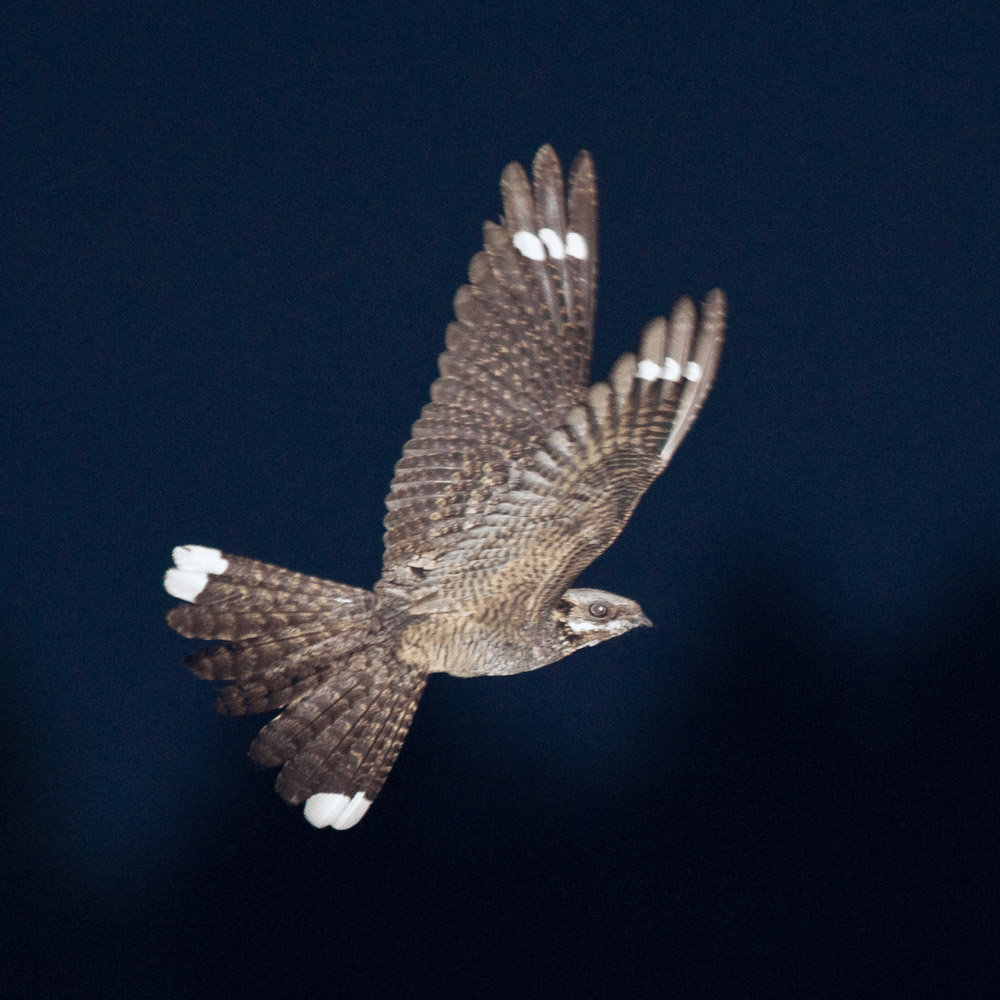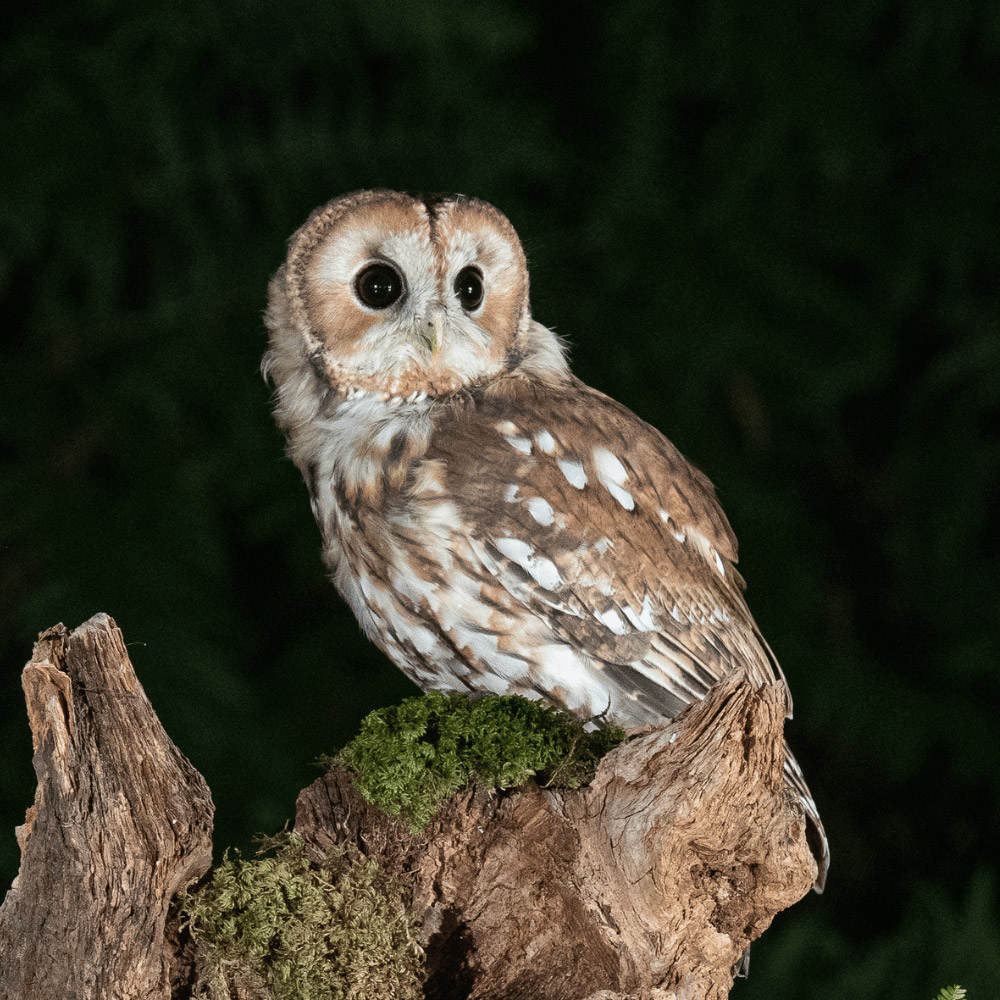The BTO Acoustic Pipeline is developing a suite of tools for the sound identification of audible bird vocalisations, and of other taxonomic groups.
About our audible classifiers

The BTO Acoustic Pipeline now provides tools for the sound identification of audible bird vocalisations and other taxonomic groups that produce audible-range vocalisations or sounds. These Acoustic Pipeline audible classifiers have the potential to outperform other large multi-species classifiers:
- They will focus on individual species, and on small suites of priority species.
- They can be tailored to deliver particular species insights, such as call types that confer proof of breeding.
Browse examples of upcoming classifiers below, or contact us at acoustic.pipeline@bto.org to find out more.
European Nightjar
 A single-species classifier
A single-species classifier
Species scope: European Nightjar, Caprimulgus europaeus, detecting churring and gro-ek calls.
Geographic scope: Britain & Europe
Performance: In independent tests, detected over 90% of Nightjar churring events. See the classifier data sheet for more information.
European nocturnal breeding birds
A multi-species classifier focussing on owls, nightjars and other nocturnal breeding birds. Contact us if you are interested in using this classifier.
Species scope:
- Owls: Barn Owl, Tawny Owl, Ural Owl, Little Owl, Long-eared Owl, Eagle Owl, Scops Owl, Great Grey Owl, Tengmalm’s Owl, Eurasian Pygmy Owl
- Nightjars: European Nightjar, Red-necked Nightjar
- Crakes: Spotted Crake, Corncrake, Little Crake
- Other species: Woodcock, Crane, Quail, Grasshopper Warbler, Savi's Warbler, River Warbler, Thrush Nightingale
Geographic scope: Europe
Performance:see the classifier data sheet.
Availability:If you are interested in using this classifier, please contact us at acoustic.pipeline@bto.org
European nocturnal flight calls
A multi-species classifier focussing on common nocturnal migrants
Species scope: The classifier provides species-level detection for 50 species of common nocturnal migrant, including:
- crakes and rails
- waterfowl and waders
- passerines
A 51st category aims to group scarcer species for which sample sizes and/or performance aren’t currently sufficient to provide species-level output.
For a full species list, see the classifier data sheet.
Geographic scope: Britain & Europe
Performance: see the classifier data sheet. Note that performance is poor during the dawn chorus, when fragments of distant bird song can resemble certain flight calls. We recommend careful manual validation of detections.
Availability: To use this classifier users must join the Nocturnal Bird Migration Project: see Take Part in Projects in the Pipeline web application
Call types of Eurasian Curlew
BETA
A single-species classifier that distinguishes among Curlew vocalisations, which can shed light on behaviour and productivity of recorded birds.
Species scope: Eurasian Curlew, Numenius arquata, classifying separate types of display and alarm calls.
Geographic scope: Britain and Europe
Performance: in independent tests, correctly assigned call status to over 90% of 30-second audio chunks. See the classifier data sheet for more information.
Availability: this classifier is in development. If you are interested in trialling or testing please contact us at acoustic.pipeline@bto.org
Acknowledgements: This classifier is being developed in partnership with David Jarrett (with funding from the Leverhulme Trust and Durham University), with BTO funded by the Yorkshire Dales National Park Farming in Protected Landscapes Programme (FiPL).
Edible Dormouse
- BETA
A single-species classifier in active development
Species scope: Edible Dormouse, Glis glis, detecting a range of vocalisations.
Geographic scope: Britain
Performance: this classifier is under development. Initial tests show performance is high, but we need to test the classifier in more locations and welcome collaboration.
Availability: Please contact acoustic.pipeline@bto.org if you are interested in working with us on this classifier.
Collaborate with us
Our focus is mostly on UK and European species, but we are happy to collaborate to develop classifiers elsewhere to support conservation and research.
Get in touch at acoustic.pipeline@bto.org to find out more.
Quality assurance

The training data used in these classifiers comes from a range of sources, all expertly curated by Principal Data Scientist, Simon Gillings.
Many of the classifiers benefit from Simon’s recordings, made in the field over the last eight years, and from other BTO acoustic projects. They are supplemented by additional recordings provided by species experts and in some cases using recordings shared on the xeno-canto platform.
- All recordings used in classifier development are rigorously checked to ensure they are assigned to the correct species.
Requirements, recommendations and support
- Audible classifiers typically produce detections for each 4-second audio chunk. Please refer to the details for each classifier for more information.
- Minimum sample rate = 22,050 Hz; higher sample rate audio will be downsampled during processing.
- Minimum clip length = 4 seconds.
See the Support Hub for more detailed guides and advice for users of the Acoustic Pipeline classifiers. You may also find our guidance on audio requirements for audible sound classifiers useful.
Case studies and testimonials
 An early version of Flight calls of thrushes was used in a study of the effect of artificial light pollution on nocturnal migrants.
An early version of Flight calls of thrushes was used in a study of the effect of artificial light pollution on nocturnal migrants.- The European Nightjar classifier was used by the Forestry Commission in Yorkshire to assess site occupancy by Nightjars.
- The European nocturnal breeding birds classifier is being used by Endangered Landscapes Programme restoration projects in Portugal and Ukraine/Belarus to detect scarce nocturnal species that are impractical to survey by conventional approaches.
Read our Case Studies to find out more about how the Acoustic Pipeline has been used in a range of applications across the UK and Europe.
Get in touch
Questions?
We’d love to hear from you.
You can reach us at acoustic.pipeline@bto.org
